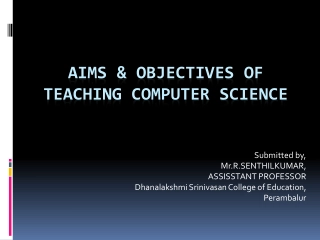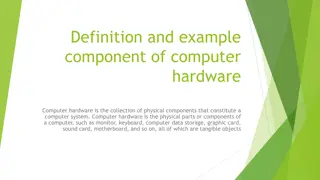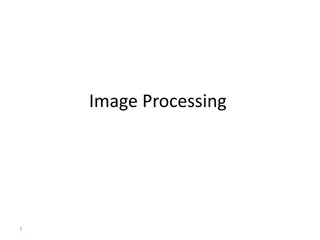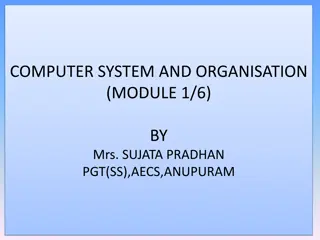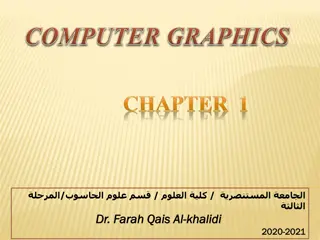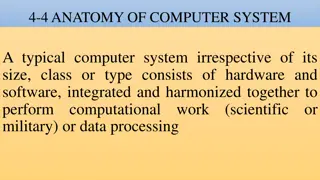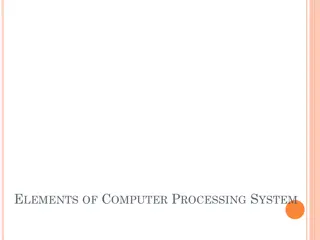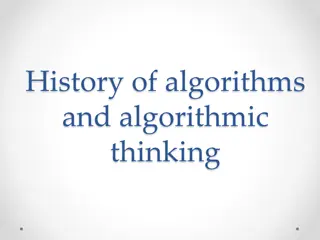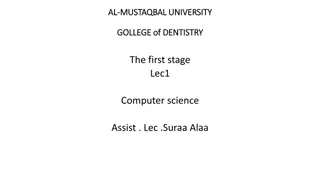
Office Automation Systems: Functions, Importance, and Applications
Learn about office automation systems, their functions, importance, and applications. Explore the primary and secondary functions of an office, services provided, and the various applications in modern office automation technology.
Uploaded on | 1 Views
Download Presentation

Please find below an Image/Link to download the presentation.
The content on the website is provided AS IS for your information and personal use only. It may not be sold, licensed, or shared on other websites without obtaining consent from the author. If you encounter any issues during the download, it is possible that the publisher has removed the file from their server.
You are allowed to download the files provided on this website for personal or commercial use, subject to the condition that they are used lawfully. All files are the property of their respective owners.
The content on the website is provided AS IS for your information and personal use only. It may not be sold, licensed, or shared on other websites without obtaining consent from the author.
E N D
Presentation Transcript
Computer Applications in Management. Ms. Dhanashree Madhava Kini. Department of Commerce and Management. Dr. B.B.Hegde College, Kundapura.
Office Automation System. Meaning of office automation system: An automated office information system attempts to perform the functions of the ordinary office by means of a computer system. What is office: A place where proper records of information are held, for the purpose of control and where, efficient and effective operations are prepared, handled and serviced.
Features of Office: Locations: value of land Cost of construction. Expansion potential. Availability if parking, banking facility. Transport facility, Adequate police and fire protection Availability of quality labour, Departmentalization. Work conditions. Staff. Information service.
Importance of an office: Identification of Business. Preparation of records and reports. Carrying out its functions. Provide employment opportunities.
Functions of office: 1) Primary Functions 2) Secondary Functions
1) Primary Functions: Receive information. Recording information. Processing information. Retrieval of information. Protecting assets.
2) Secondary Functions: Communication. Planning and scheduling. Coordination and direction. Supervision and control. Computation. Compilation and presentation of statistics. Arranging funds.
Services provided by Office: Mailing service. Drafting, typing and duplicating service. Oral communication service. Accounting service. Filing and indexing service. Billing service. Statistical service.
Applications of office automation: Word processing. Spread sheet. Paint and draw program. Image processing. Storage and retrieval of images. Presenation graphics and multimedia system. Groupware system. Chat system. Whiteboard. E-Mail. Voice mail. Fax. Electronic calendar.
Advantages of office automation system: Greater efficiency. Better service. Better accuracy. Demanding for timeliness. Facility in control. Facilitates standardization of office routines. Relieving monotony. Prevention of fraud. Better information retrieval. Lower operating cost. Reduction in paper work. Improved communication environment.
Limitations of office automation system Capital. Time. Expertise. Training. Repair service. Software. Security.
Virtual office: It refers to work environments that are delivered and accessed through web-based communication and computing technology. Advantages: Cost savings. Lower risk to business venture. Increase of commitment and productivity. Attraction and retainment of value talent. Reach to customer. Family time.
Disadvantages of virtual work place: Cost of establishment and maintenance of virtual workplaces. Loss of efficiency. Lack of trust. Lack of focus. Conflicts. Lack of interaction. Decreased productivity. Communication can be tough.

